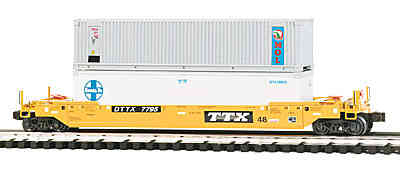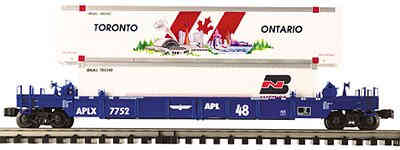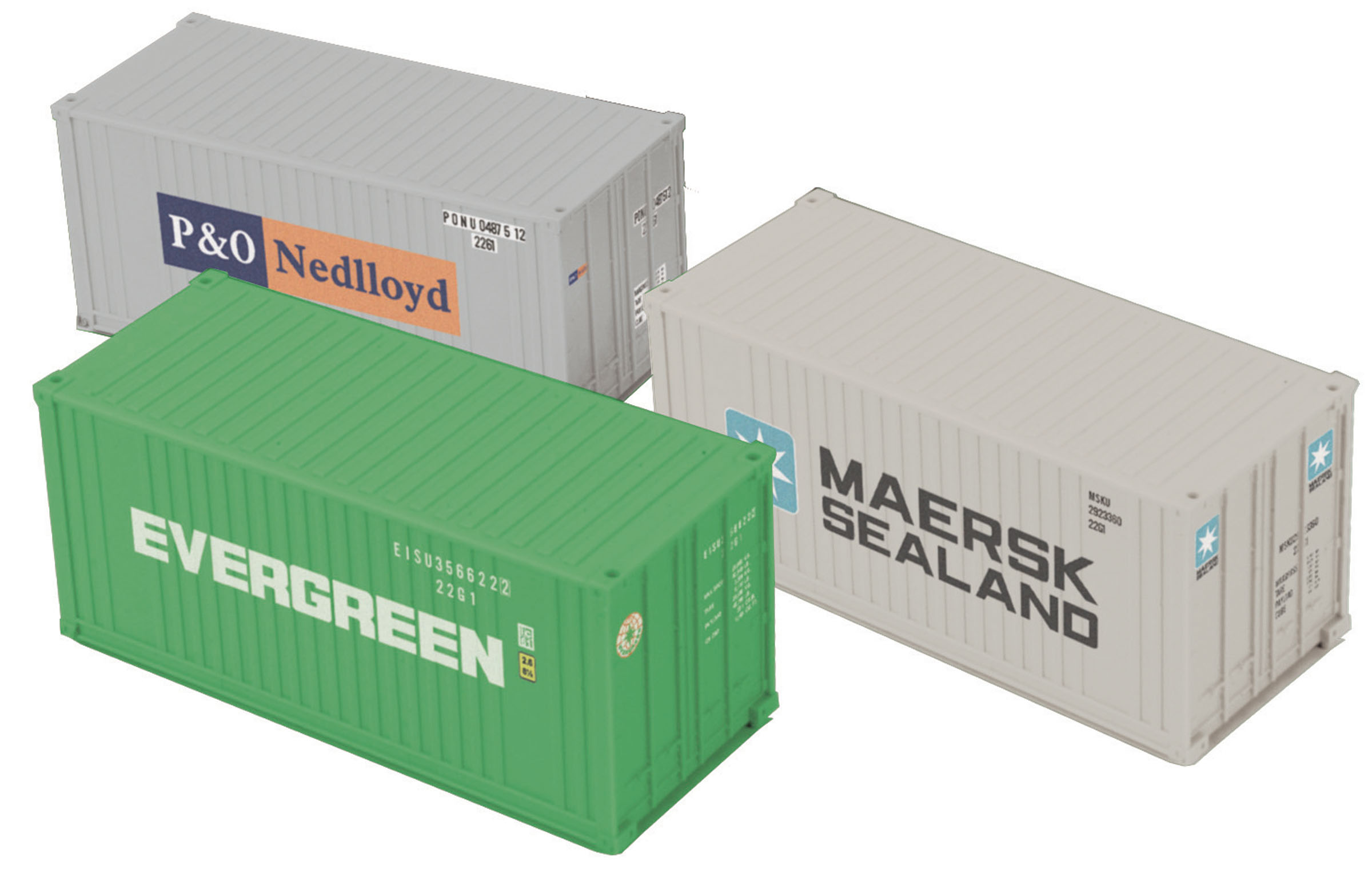The single most important factor in improving the standard of living for billions of people all around the world in last third of the 20th century was the increase in efficiency added to global transportation by containerization. Handling goods once at their point of origin, shipping them across continents or oceans and unloading them one time at their destination dramatically reduced the cost of transportation by increasing asset utilization and reducing labor, breakage and theft. That reduction in cost made goods produced all around the world affordable to people living all over the world. It increased purchasing power at the very same time that it made labor more valuable. That double impact has helped to lift hundreds of millions of people out of poverty and allowed hundreds of millions more to enjoy the kinds of goods and services that were once only common in western Europe and North America.
Many people and transportation firms were working on improving transportation efficiency through containerization in the middle of the 20th century. American railroads began offering highway trailer on flat car service and formed Trailer Train, now TTX, for joint ownership of piggy back flat cars in 1955. The US military developed container express or Con Ex boxes to overcome delays, damage and theft at ports. On the west coast the Alaskan Steam Ship Company and Matson developed containers to improve the efficiency of their respective operations between Seattle and Alaska and San Francisco and Hawaii. But the man regarded as the father of containerization, modern intermodal transportation and globalization started out as a farmer, became a truck owner/operator and built and then sold one of America's largest trucking companies to become a steamship company owner and make his vision of containerized intermodal transportation a reality. His name was Malcom McLean and his vision created Sea-Land.
On April 26, 1956 McLean's first container ship, the Ideal X, left New York Harbor with fifty-eight 35 foot long containers on board for Houston, Texas. By the 1960s Sea-Land had expanded its routes to Europe and Asia and offered patented container design features for use royalty free to help establish international standardization. By the 1970s 20 foot and 40 foot containers had been accepted as international standards and Twenty Foot Equivalent Units or TEUs had become the standard unit for measuring the capacity of ships, ports and growing international trade.
This short TED-Ed video gives tells the story of Malcom McLean, his inspiration and his impact on the world we live in today.
Container ships dramatically increased the efficiency of shipping between ports. Trucks extended the reach of cost effective containerized shipping hundreds of miles inland from ports. But in the vast expanse of the North American continent there were opportunities for further increases in efficiency via rail transportation from port cities into the American heartland and even as a land bridge for expedited shipments between Asia and Europe. As promising as container traffic was for railroads in the 1970s there were still legal and technical impediments to growth.
The bankruptcy of northeastern and midwestern railroads shocked the US Congress into deregulating railroad rates. This finally enabled the railroads to offer lower prices to steamship companies without having to endure the delay and expense of petitioning the government to allow the railroad to charge a lower rate and retaining lawyers to represent them through the bureaucratic process.
The basic technical problem facing railroads in containerized shipping was one of length verses weight. The forty foot shipping container was as long as a 1950s boxcar but carried only about half the weight. While two 40 foot containers were commonly hauled on an 89 foot flat car in the 1970s they made for a longer train than one of the same tonnage composed of boxcars. That made container trains too long for sidings if the tonnage of the train was heavy enough to take full advantage of the economic promise of trainload shipments of containers.
In 1977 the Southern Pacific, Sea-Land and car builder ACF teamed up to build the first well car that allowed one 35 or 40 foot container to be stacked on top of another and secured by end bulkheads. By stacking container the SP was able to put the same tonnage that could be carried on an 89 foot flat car in approximately half the length. That meant a siding length full tonnage container train was a real possibility. A three unit articulated car set followed in 1979. When Southern Pacific received the freedom to price their services in 1981 Sea-Land made a major commitment to container shipping by rail and ordered 42 five unit articulated well cars, enough for two complete trains. The articulated car sets proved the concept of double stack trans and offered dramatically reduced slack action over conventional railcars.
Gunderson Twin-Stacks
By the mid 1980s the Gunderson Twin-Stack helped to make the double stack concept a standard from coast to coast with five platform articulated car sets. Sea-Land's original 35 foot containers were phased out 20 and 40 footers remained most common while new, longer 45 and 48 foot containers came into use and well car length grew to accommodate the longer containers.
Both Atlas and MTH have produced models of the Gunderson Twin-Stack for the O scale market.
Atlas introduced their model in 2006. Available in 2 or 3 rail they feature diecast construction and a high level of detail. Sold in two car A/B end sets and three car C/D/E intermediate sets, containers are available separately. The wells will accommodate 20 foot (lower level) or 40 and 45 foot containers.


MTH has offered models of the Gunderson Twin-Stack since 2007. They have been available as a two unit end car set, three unit intermediate set, single 5 unit set or as a 5 unit set with a GP60M, SD70ACe or AC4400 diesel locomotive. The models are made from injection molded plastic and 20, 40 or 48 foot containers are included.

The Gunderson Husky-Stack
The Husky-Stack can carry heavier loads than articulated cars and railroads and TTX have purchased them as single cars or drawbar connected sets. The upper level containers are secured with shipboard style twist locks making end bulkheads unnecessary.
MTH brought the first injection molded double stack car model to the 3 rail O scale market in their Fall/Winter 1996 catalog with their rendition of the Gunderson Husky-Stack 48 foot single platform well. First offered with with two 48 foot containers...

these mainstays of the Premier line have a also been offered with two 20 foot containers and a single 40 foot container...

two 20 foot ISO tanks and a single 40 foot container...

or two 20 foot containers and a single 48 foot container.

Lionel's entry in the stack train market is also based on the Gunderson Husky-Stack. Introduced in 2005 the Lionel model features a diecast body and comes with containers. Decorated as a 48 foot car the well is only 45 scale feet long as are the containers.

K-Line also offered a version of the Husky-Stack and the competing Thrall well car with diecast models.


The K-Line cars are decorated as having 48 foot wells. However, the wells measure only 40 scale feet long. That brings up an interesting situation in the world of intermodal transportation and O scale modeling. Since the 1990s the market for well cars has shifted as containers have evolved. Today's well car is likely to be either a 40 foot car for international containers or have a 53 foot well for domestic containers. Some older well cars have even been rebuilt to the shorter or longer lengths. The K-Line cars are the only O gauge models with a 40 foot well and no model is yet available with the now common 53 foot well.
Gunderson Maxi-IV
Atlas has responded to the demand for models of the well cars most commonly seen today with the Gunderson Maxi-IX. The Maxi-IV will accommodate 53 foot domestic containers. Atlas is building them as three unit sets. Delivery of the first production run is expected in the second quarter of 2016.

Modern Trailer on Flat Car Models
Several different styles of car have been built in attempts to handle highway trailers in an efficient fashion. One of the most radical and least successful was the Front Runner. Designed in the early 1980s a built by a variety of manufacturers they proved prone to derailments. Mass scrapping took place in the early 2000s.
Atlas introduced their model of the Front Runner just as the real cars were falling to the torch. They feature diecast construction and come with an Atlas 45 foot Pines trailer.

MTH has cataloged five unit spine car sets twice, first the 20-95035 in 1997 Volume 1 and then the 20-95036 in 1998 Volume 2. They Feature a mix of containers and trailers.

Two car sets have been offered more recently.

K-line produced the K77027E TTUX diecast 5 unit spine car set...

as well as 3 packs and individual cars.

For the domestic intermodal market Bowser offers 53' O scale road railers.

And Weaver makes 53 foot trailers. Three of them aboard a pair of 89 foot flat cars would add contemporary flair to an intermodal train.

Separate sale containers make O scale intermodal modeling fun, colorful and full of virtually endless combinations of cars and containers.


As always, additions or corrections are most welcome. And let us see your O scale models of modern intermodal equipment. ![]()
For information on earlier TOFC models see the Piggy Back flatcar thread.
https://ogrforum.com/t...piggy-back-flat-cars
For information on other types of O scale freight cars see the O Scale Freight Car Guide.
https://ogrforum.com/t...le-freight-car-guide
And for information on O scale locomotives see the O Scale Locomotive Guide.
https://ogrforum.com/t...ale-locomotive-guide




























